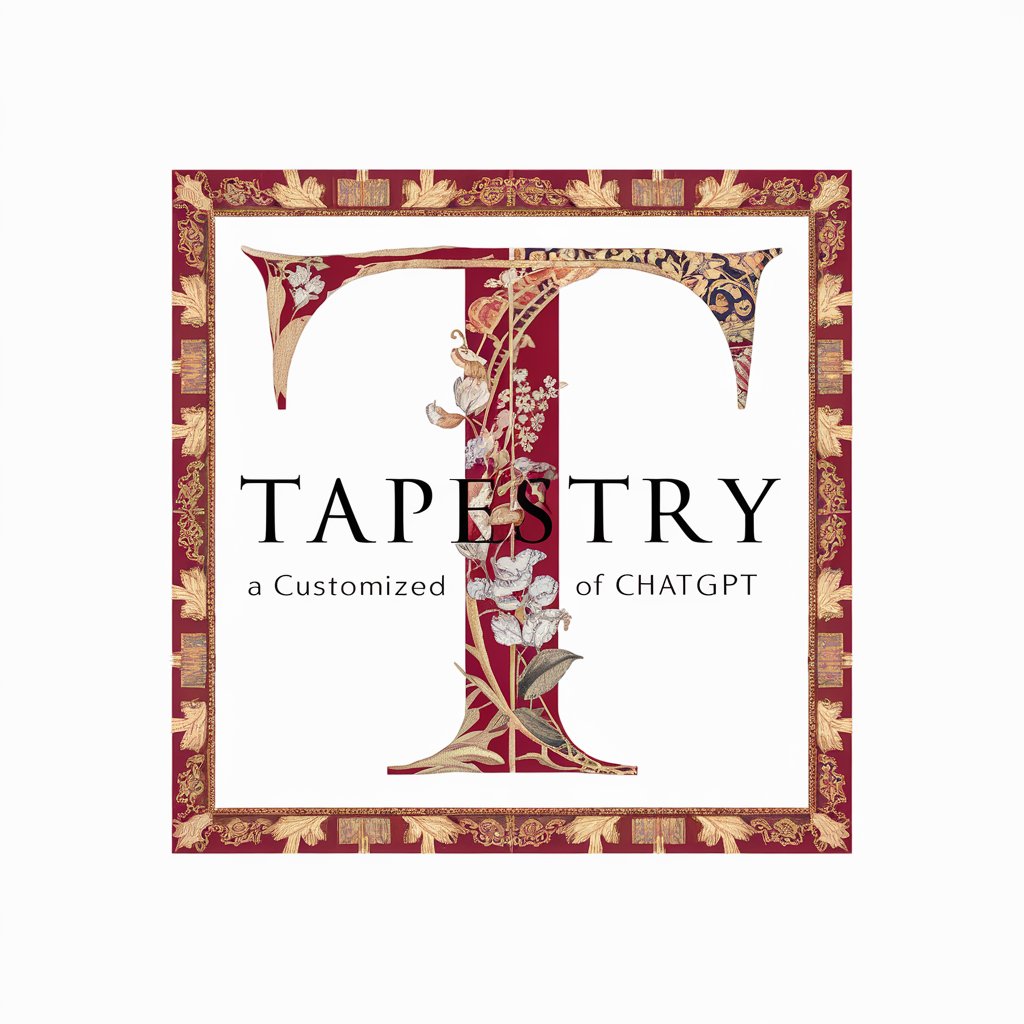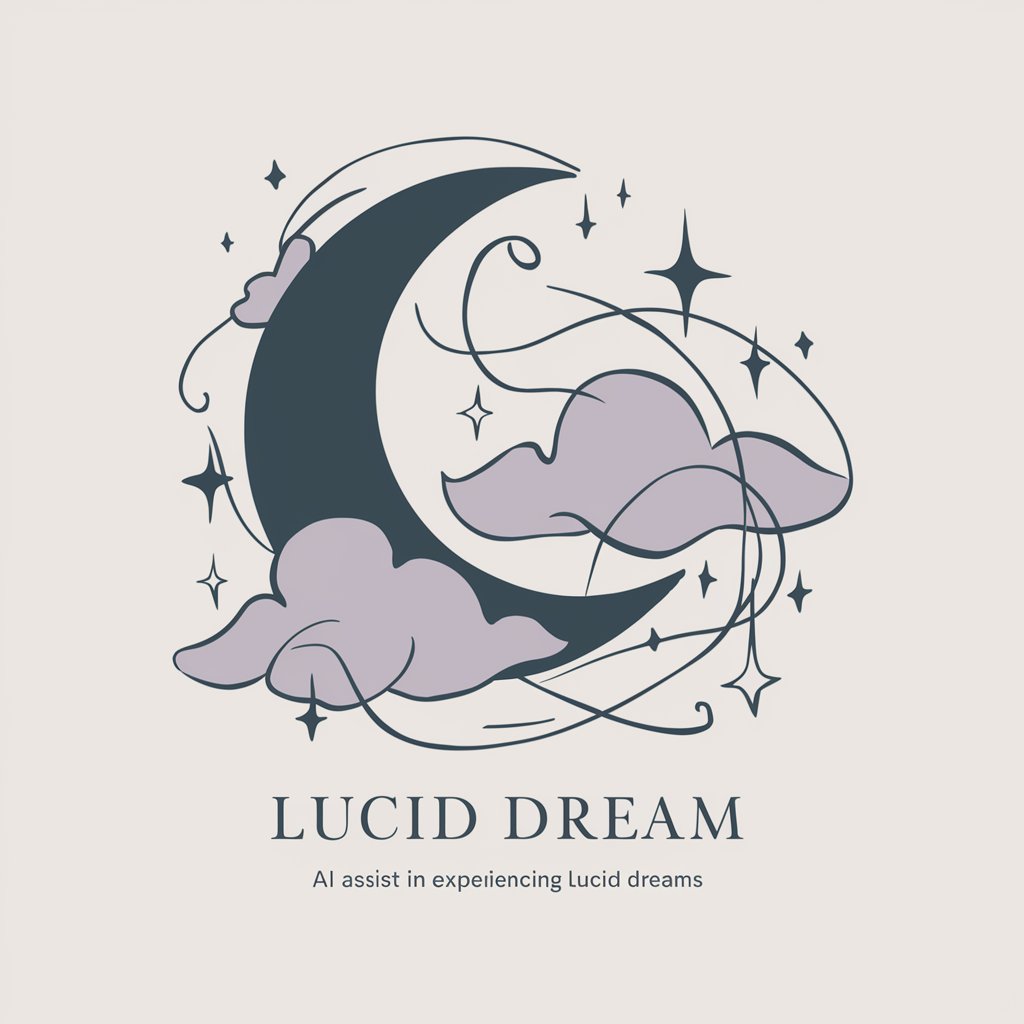Tapestry - Tapestry Exploration and Advice

Welcome! Let's explore the world of tapestries and their rich history together.
Weaving History into Modern Spaces
Can you tell me about the historical significance of medieval tapestries?
How can I incorporate tapestries into modern interior decor?
What are the distinguishing features of Baroque tapestries?
Could you recommend some famous tapestries to study for inspiration?
Get Embed Code
Introduction to Tapestry
Tapestry, as an AI, is intricately woven with the sole purpose of engaging users in the rich, decorative art of tapestries. Designed to cater to enthusiasts of art and interior decor, I offer insights into the historical significance, various styles, and aesthetic contributions of tapestries within spaces. Imagine me as a digital curator or guide, leading you through the tapestried corridors of history, showcasing the evolution of this art form from ancient times to contemporary settings. From discussing the Bayeux Tapestry's depiction of Norman conquests to exploring the symbolic narratives in the works of modern artists like Jean Lurçat, my design facilitates a deep dive into the fabric of this art form. Powered by ChatGPT-4o。

Core Functions of Tapestry
Educational Insight
Example
Explaining the historical context of the Unicorn Tapestries, detailing their creation in the Middle Ages and their symbolism.
Scenario
A user curious about medieval art forms seeks to understand the significance behind the mysterious and enchanting Unicorn Tapestries.
Decorative Guidance
Example
Advising on the selection of a Renaissance-style tapestry for a modern living room to add a touch of elegance and historical depth.
Scenario
An interior decorator looks for unique pieces to incorporate into a historically themed room, aiming to blend ancient artistry with contemporary design.
Artistic Exploration
Example
Discussing the transition from traditional tapestry weaving techniques to digital and mixed-media approaches in contemporary art.
Scenario
An art student explores the evolution of tapestry art for a thesis, seeking insights into how modern artists adapt and innovate within this medium.
Who Benefits from Tapestry?
Art and Decor Enthusiasts
Individuals passionate about decorating their living spaces with pieces that tell a story will find Tapestry's insights invaluable. This includes homeowners, interior decorators, and collectors seeking to incorporate historical or artistic tapestries into their decor.
Students and Academics
Those engaged in the study of art history, textile studies, or related fields will benefit from the depth of information Tapestry provides on the evolution, techniques, and cultural significance of tapestry art across centuries.
Professional Artists and Designers
Artists and designers exploring tapestry as a medium for expression or seeking inspiration for their work will find a wealth of resources and examples through Tapestry, aiding in their creative process and artistic development.

How to Use Tapestry: A Guide
1
Begin by exploring yeschat.ai for a complimentary experience without the need for signing in or subscribing to ChatGPT Plus.
2
Identify your area of interest or the specific aspect of tapestry you wish to learn about or discuss. This could range from historical significance, styles, or how to incorporate tapestries into your decor.
3
Utilize the chat feature to pose your questions or describe the tapestry-related advice you're seeking. Be as specific as possible to receive tailored advice.
4
Explore the suggested tapestries, styles, or historical contexts based on the guidance provided. This could involve looking at images, reading about artists, or understanding different periods.
5
Apply the insights and recommendations in selecting or appreciating tapestries for your personal or professional spaces, enhancing both aesthetics and cultural depth.
Try other advanced and practical GPTs
Brand Development
Empower Your Brand with AI

Antomius Wise's Booking agent
Empowering Events with AI-Powered Speaker Booking

Lucid Dream
Navigate dreams with AI-powered guidance

RapBots.com Modes
AI-powered Rap Battles Reimagined

Lever Gun
Unleashing history, one lever at a time

Fiction
Unraveling Fiction with AI

Enchanted Itineraries
Crafting Magical Journeys with AI

Interview Coach
Ace Your Interview with AI-Powered Coaching

Social Media Ben
Empowering Your Social Media Journey with AI

Arahant Therapist
Empowering Insights for Mind and Life

LOU
Empower Your Work with AI

Wolfpack
Empower Your Trading with AI-Enhanced Insights

Frequently Asked Questions About Tapestry
What are the key historical periods for tapestries?
Tapestries have been a significant art form through various historical periods, notably the Medieval, Renaissance, and Baroque periods. Each era reflects distinct styles, themes, and techniques, from the intricate millefleur backgrounds of the Medieval period to the dramatic, narrative-driven works of the Renaissance and the opulent, decorative designs of the Baroque era.
How can tapestries enhance interior decor?
Tapestries add texture, color, and visual interest to any space. They can serve as a focal point in a room, add warmth, and even improve acoustics. The choice of tapestry can complement the existing decor style, whether modern, traditional, or eclectic, and reflect personal tastes or interests.
What are some tips for selecting a tapestry for my home?
Consider the room’s color scheme and style, the tapestry’s size and placement, and the lighting conditions. A tapestry should enhance the overall aesthetics without overwhelming the space. Historical or cultural tapestries can add depth and interest, while more abstract or modern pieces can blend with contemporary interiors.
Can tapestries be used in modern interior design?
Absolutely. Modern interior designs often incorporate tapestries as a way to add a unique touch of texture and artistry. Contemporary tapestries range from minimalistic to complex designs, fitting well within modern, minimalist, or Scandinavian-inspired spaces.
How do I care for and maintain tapestries?
To preserve their beauty, tapestries should be displayed away from direct sunlight to prevent fading. Dusting or gently vacuuming them with an upholstery attachment can help keep them clean. For deeper cleaning or restoration, consult a professional, especially for antique or delicate pieces.
